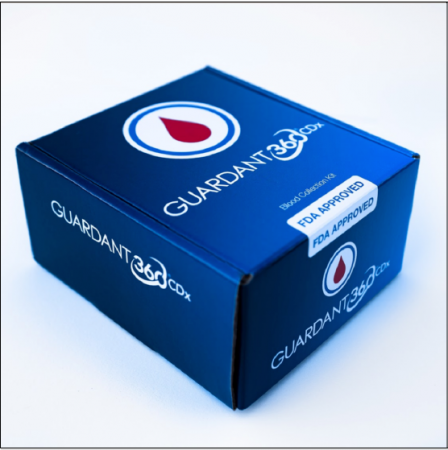Guardant360 CDx – P200010/S002
This is a brief overview of information related to FDA’s approval to market this product. See the links below to the Summary of Safety and Effectiveness Data (SSED) and product labeling for more complete information on this product, its indications for use, and the basis for FDA’s approval.
Product Name: Guardant360 CDx
PMA Applicant: Guardant Health, Inc.
Address: 505 Penobscot Drive Redwood City, CA 94063 USA
Approval Date: May 28, 2021
Approval Letter: Approval Order
What is it?
Guardant360 CDx is a laboratory test designed to detect gene mutations found in circulating cell-free DNA (cfDNA) to help doctors identify patients with non-small cell lung cancer (NSCLC) who may benefit from specific FDA-approved treatments.
This approval expands the indications for use of the Guardant360 CDx test to include an additional mutation (KRAS G12C) as a target for treatment options for NSCLC patients. For patients with the KRAS G12C genetic mutation, this test may help identify if treatment with the drug LUMAKRAS (sotorasib) will be appropriate.
How does it work?
A patient’s blood sample is sent to a laboratory for testing. The blood is spun to separate the blood cells from the plasma portion. The cfDNA is isolated from a patient’s plasma sample and mixed with chemical substances, called reagents, that find and test the DNA sequences for the KRAS G12C mutation. A medical professional reviews the results and sends a report to the patient’s doctor. The doctor uses this information to help manage the care of patients with non-small cell lung cancer.
When is it used?
Guardant360 CDx is used to test the blood of patients with non-small cell lung cancer when doctors are looking for personalized treatment of NSCLC patients.
What will it accomplish?
Guardant360 CDx test helps select eligible NSCLC patients carrying KRAS G12C mutations for treatment with LUMAKRAS (sotorasib) as demonstated during clinical study. The test also provides information to the doctor about mutations in 55 genes that could be associated with the patient’s tumor, which can help plan personalized treatment.
When should it not be used?
There are no known reasons not to use this test.

